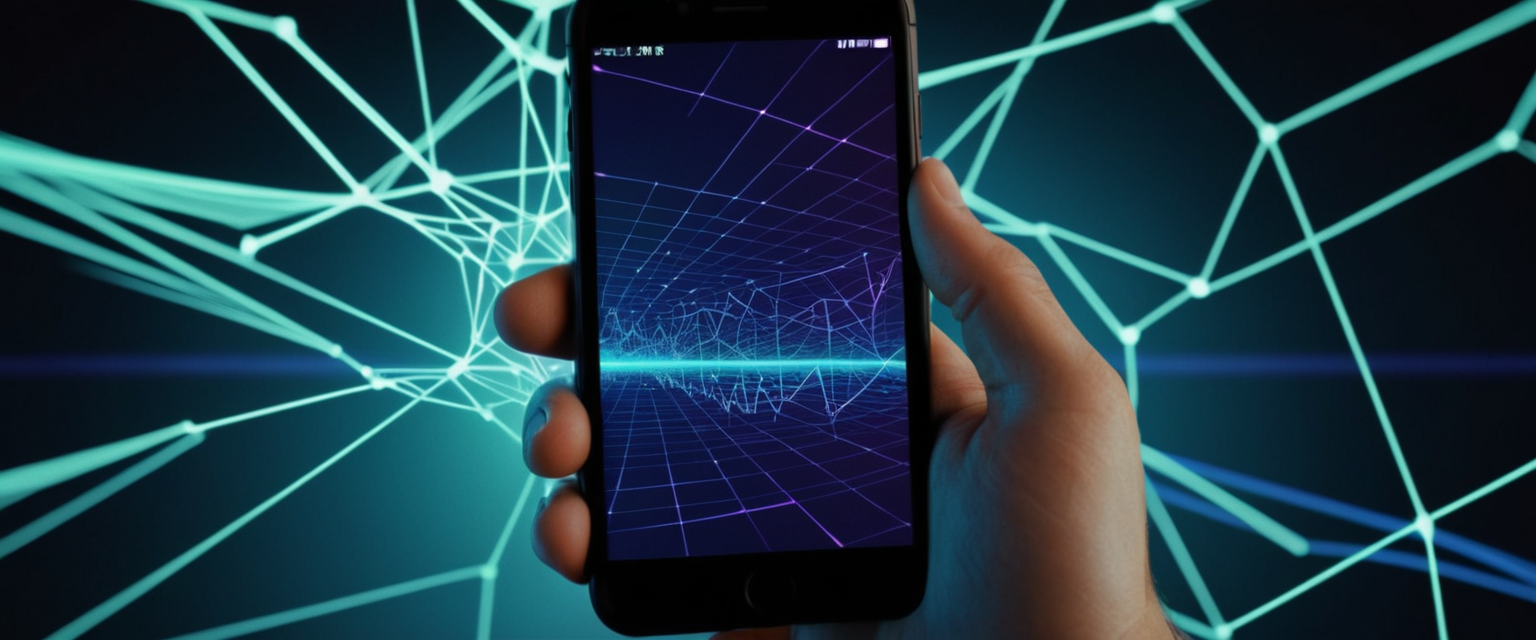
Stalkerware represents one of the most insidious privacy threats facing smartphone users in the contemporary digital landscape, with particular implications for camera and microphone security that often remain underappreciated by the general public. This report examines the multifaceted warning signs of stalkerware installation on mobile devices while situating these indicators within the broader context of webcam and microphone defense mechanisms. The research reveals that stalkerware applications can covertly activate a device’s camera and microphone to record audio, video, and ambient conversations without any visible notification to the user, creating a form of intimate digital violation that can escalate physical danger for victims of domestic abuse and harassment. By synthesizing current evidence from cybersecurity research, victim advocacy organizations, and technical security analyses, this report identifies the critical warning signs that individuals should monitor, explores the technological architecture enabling camera and microphone surveillance, and provides actionable guidance for detection, prevention, and remediation of these surveillance threats. Understanding these warning signs is essential not only for individual privacy protection but also for recognizing potential cases of technology-enabled abuse that may warrant intervention from law enforcement, victim advocacy services, and healthcare providers.
Understanding Stalkerware as a Category of Digital Surveillance Technology
Stalkerware operates as a distinct class of commercially available surveillance software that differs fundamentally from corporate spyware used by governments or major organizations in both its purpose and deployment mechanisms. The term “stalkerware,” sometimes referred to as “spouseware” in the context of intimate partner surveillance, describes software programs, applications, and devices designed to enable one person to secretly monitor another person’s phone activity without knowledge or consent. Unlike generic spyware that may target broad populations or specific organizational systems, stalkerware is explicitly marketed toward jealous partners, suspicious spouses, and individuals seeking to maintain control over family members through comprehensive digital surveillance. The accessibility of these applications represents a critical vulnerability in contemporary digital ecosystems, as the abuser does not require advanced technical expertise to deploy stalkerware—they need only easily accessible consumer spyware and an opportunity to install it on their target’s device. The commercialization of stalkerware has created a thriving industry with dozens of active applications including mSpy, FlexiSPY, Eyezy, Spynger, TheTruthSpy, Cocospy, SPYERA, and many others available on both legitimate app stores and through illicit distribution channels.
The distinction between stalkerware and other forms of malware lies in both the intent of the perpetrator and the scale of surveillance capabilities implemented. Stalkerware is fundamentally designed for continuous, comprehensive monitoring of an individual’s digital activities and physical location, with the explicit purpose of enabling control, intimidation, or harassment. Most stalkerware applications require physical access to the device for initial installation, though some variants can be distributed through phishing emails, malicious links, or by pre-installation on devices given as gifts. Once installed, these applications operate in stealth mode, meaning they function entirely without the knowledge of the device owner and often without any visible indicators of their presence on the device. The business model of stalkerware companies involves charging subscription fees to monitor victims, with the monitoring conducted through a web-based or mobile interface that allows the perpetrator to access surveillance data from a different device entirely. This remote access capability enables perpetrators to maintain surveillance even when separated physically from the victim, fundamentally transforming the nature of intimate partner violence by extending abuse into the digital realm while creating persistent, inescapable monitoring.
The Technology Infrastructure Enabling Camera and Microphone Surveillance
Among the most concerning capabilities of stalkerware applications is their ability to access and activate a device’s camera and microphone remotely, transforming smartphones into covert surveillance devices that can record video and audio without the user’s knowledge or consent. Advanced stalkerware applications leverage legitimate smartphone capabilities that were designed for authorized uses such as video calling, voice recording, and augmented reality applications, but exploit these capabilities through unauthorized activation and transmission of data. The activation of camera and microphone functionality on stalkerware-infected devices occurs without triggering the notification systems that typically alert users when these sensitive sensors are in use. On many modern smartphones, particularly newer models, indicator dots or lights appear at the top of the screen when applications access the camera or microphone, but sophisticated stalkerware can circumvent these notification systems or time its activity to occur when users are unlikely to notice. This represents a profound violation of privacy that extends beyond text message interception or location tracking to enable the perpetrator to observe and record the intimate spaces where victims reside, work, or seek refuge.
The technical mechanisms enabling this camera and microphone access operate through the permission systems built into smartphone operating systems. Both Android and iOS devices incorporate granular permission systems that govern which applications can access sensitive features including location services, microphone, camera, contacts, call logs, and message content. Stalkerware applications request or exploit these permissions during installation, and once granted, they maintain persistent access to device cameras and microphones. On Android devices, this access can be particularly invasive if the stalkerware has obtained device administrator privileges, which grant the application broad control over system functions that would normally be restricted to authorized system administrators. Some advanced stalkerware variants can intercept encrypted messages, a capability that undermines the security provided by end-to-end encryption services that users may believe are protecting their communications. The remote activation capability means that a perpetrator can turn on a device’s microphone to listen to conversations happening in the immediate vicinity of the phone, or activate the camera to observe what is happening in a room without the device owner’s awareness.
The implications of this microphone and camera surveillance for victim safety are severe and multifaceted. Perpetrators who can listen to conversations through an activated microphone gain intelligence about victim safety planning, communication with advocates or law enforcement, or coordination with family members attempting to help the victim escape the abusive relationship. This capability has been documented in real cases where perpetrators committed violent acts against victims and their companions based on intelligence gathered through remote microphone activation on devices present in the location. Furthermore, camera surveillance enables perpetrators to monitor the physical environment where victims spend their time, potentially informing decisions about when and where to pursue harassment, stalking, or escalated violence. The psychological impact of knowing or suspecting that one’s camera and microphone are subject to remote activation creates a form of environmental stress and hypervigilance that compounds the trauma of intimate partner violence. Victims report avoiding using their phones for safety planning, becoming fearful of technology itself, and experiencing symptoms consistent with PTSD related to the constant awareness of potential surveillance.
Recognizing the Behavioral Warning Signs of Stalkerware Infection
One of the most prevalent and readily observable warning signs of stalkerware infection involves the abuser demonstrating knowledge of information that should not be accessible without surveillance technology. When an abusive partner knows specific details about the victim’s location at particular times, recalls conversations that only occurred in private settings, or references content from text messages or online communications that were not shared with them, this discrepancy between information access and legitimate knowledge sources suggests active surveillance through stalkerware or other monitoring technologies. The most common manifestation of this warning sign involves the perpetrator knowing extremely specific details about the victim’s movements and locations, including the exact time and place the victim visited a particular location, identifying who the victim spoke to and the content of those conversations, and recalling specific text messages or search queries that the victim performed online. This behavioral change in the perpetrator often represents the most reliable indicator of stalkerware presence because it represents a sudden shift from the perpetrator’s previous knowledge baseline. Victims frequently report that prior to suspecting stalkerware installation, their abuser did not have this level of detailed information about their activities, but following periods when the abuser had access to their phone, the perpetrator’s statements about their whereabouts and communications became eerily accurate.
The psychological impact on victims when they recognize this sudden increase in knowledge held by their abuser can be profound and destabilizing. Victims describe feeling a complete loss of privacy and autonomy, recognizing that their attempts to communicate with safety advocates, family members, or law enforcement may be intercepted or observed by the perpetrator. This awareness that the perpetrator possesses detailed information about private communications can discourage victims from reaching out for help, seeking medical attention for injuries, or making concrete plans to leave abusive relationships. The behavioral warning sign manifests differently depending on the victim’s recognition of the pattern; some victims notice relatively quickly that the perpetrator’s knowledge seems impossible to explain through legitimate means, while others may dismiss the perpetrator’s comments as coincidence or attribute them to the perpetrator’s surveillance of their social media accounts or other non-technical monitoring methods. Additionally, victims who are themselves uncertain about their privacy and safety may be more vulnerable to a perpetrator’s gaslighting tactics that explain away the victim’s concerns about surveillance as paranoia or mental health concerns rather than legitimate security threats.
Another significant behavioral warning sign involves the abuser having had physical access to the victim’s device at some point prior to the suspected stalkerware installation. Because most stalkerware requires direct physical access to a device for installation, the temporal proximity between a period when an abuser had the victim’s phone and the subsequent development of suspicious device behavior or unusual knowledge by the abuser provides circumstantial evidence of installation. Many victims recall moments when their abuser insisted on fixing a technical problem with their phone, updating software, or repairing a malfunctioning component—activities that provided the abuser with the opportunity and time needed to install stalkerware applications. Some perpetrators exploit trust and affection by offering gifts of new smartphones or tablets, devices that may already have stalkerware pre-installed before being given to the victim. This installation through gifted devices is particularly insidious because it undermines the victim’s ability to trust gifts of technology and creates a scenario where the victim may be unaware that the device was compromised from its initial activation.
Technical Warning Signs: Battery Drain and Data Usage Anomalies
Among the most frequently cited technical warning signs of stalkerware infection are unexplained rapid battery depletion and unusual increases in cellular or mobile data usage. Stalkerware applications operate continuously in the background of infected devices, performing resource-intensive activities including continuously monitoring device activity, collecting location data via GPS, recording video and audio, intercepting messages and call logs, and transmitting all collected data to remote servers controlled by the perpetrator. This constant background activity consumes substantial processing power and network resources, which manifests to the device owner as battery drain that occurs independently of their normal usage patterns. Victims report that their phone batteries that previously lasted a full day of normal use suddenly require recharging every few hours or power down unexpectedly even when the battery indicator shows significant remaining charge. The battery drain caused by stalkerware differs from normal battery depletion patterns because it occurs even when the user is not actively using the device, distinguishing stalkerware-induced drain from high battery consumption caused by intensive personal activities like video streaming or gaming.
The data usage anomaly warning sign similarly reflects the resource-intensive nature of stalkerware surveillance infrastructure. Every captured message, photo, video, location update, and audio recording must be transmitted from the infected device to the perpetrator’s remote command and control servers, generating substantial data traffic that exceeds the victim’s normal usage patterns. Victims who closely monitor their cellular data usage frequently report sudden, unexplained spikes in monthly data consumption that coincide with periods when they suspect surveillance may have begun. For victims on limited data plans, these unexpected increases in usage may result in unexpected overage charges or service throttling that draws the victim’s attention to potential unauthorized activity on their device. The timing of increased data usage provides additional diagnostic value, as stalkerware-induced data consumption typically occurs consistently across all hours and days, including periods when the victim is not actively using their phone, distinguishing it from normal usage patterns that correspond to the user’s activity.
The combination of rapid battery drain and elevated data usage provides stronger evidence of stalkerware than either indicator alone, as both symptoms result from the same underlying cause—constant background surveillance activity. Victims who investigate their device’s battery usage statistics within the settings menu may observe that unrecognized applications are consuming unusually high percentages of battery power, though sophisticated stalkerware may disguise its resource consumption by mimicking legitimate system processes or distributing its activity across multiple fake applications. Similarly, devices infected with stalkerware may show elevated data usage in the background even during periods of apparent inactivity, indicating that the surveillance application is actively transmitting data to remote servers without the device owner’s knowledge.
Identifying Physical Device Behavior Changes and Performance Degradation
Beyond battery and data usage anomalies, stalkerware infection often manifests through observable changes in device behavior and performance degradation that alert users to the presence of unauthorized software. Devices infected with stalkerware frequently exhibit unexplained overheating, with users reporting that their phones become noticeably warm to the touch even when not in active use, during charging, or during periods when the device is idle. This overheating results from the increased processing load imposed by stalkerware continuously monitoring and transmitting surveillance data, and the heat generation can become severe enough that victims notice their devices becoming uncomfortably warm after short periods of use. The overheating may be accompanied by the device unexpectedly powering down as thermal throttling mechanisms activate to prevent hardware damage, further disrupting the victim’s normal device usage.
General performance degradation represents another category of behavioral warning sign, with infected devices experiencing freezing, slowness, and reduced responsiveness compared to their baseline performance. Applications may take substantially longer to open, scrolling through screens may become sluggish, and the device may become unresponsive for periods of time as the processor handles both the device owner’s requests and the stalkerware’s surveillance activities. The degradation may be severe enough that the device becomes functionally impaired, making normal activities like messaging, calling, or web browsing frustrating and time-consuming. These performance issues may be particularly noticeable on older devices or devices with more limited processing power, though stalkerware can degrade performance even on relatively new, high-powered smartphones if the surveillance demands are sufficiently intensive.
Unexpected system behavior changes may also indicate stalkerware presence, including spontaneous shutdowns and restarts without user initiation, screen flickering or unusual display behavior, unexpected notifications appearing and disappearing, and changes to default settings that the user did not authorize. The device may exhibit particular sensitivity to certain types of activity, such as responding slowly or behaving erratically when the user attempts to access sensitive accounts like email or banking applications, a pattern that reflects stalkerware attempting to intercept authentication credentials. Some victims report that their devices appear to turn on or reboot when not being actively used, suggesting background activity from installed surveillance applications. These behavioral changes often accumulate over time, creating an overall impression that the device has begun to malfunction or deteriorate, when in reality the deterioration results from unauthorized surveillance software consuming device resources.

Phone Call and Network Anomalies as Surveillance Indicators
Another category of warning signs involves unusual sounds, noises, or behavior patterns during phone calls and network connectivity. Victims with stalkerware-infected devices frequently report hearing unexpected beeping, clicking, static, or distant voices during phone calls, phenomena that distinguish themselves from normal poor signal issues because they occur consistently across different network conditions and locations. These noises may represent interception or recording activity initiated by stalkerware when the device detects an outgoing or incoming phone call, as the surveillance application attempts to monitor or record the conversation. The presence of these sounds during calls can create significant anxiety for victims who fear that their conversations with safety advocates, family members, or law enforcement are being intercepted and monitored by the perpetrator.
Additional network-related warning signs may include calls dropping unexpectedly without legitimate network reasons, calls failing to connect or requiring multiple attempts to establish connections, and the device exhibiting unusual connectivity issues despite adequate signal strength. Some victims report that their calls seem to be monitored or recorded, noting that family members or friends have mentioned hearing background interference or unusual sounds when communicating with the victim. The perpetrator may join calls surreptitiously through stalkerware’s remote eavesdropping capabilities, enabling the perpetrator to listen to conversations in real time without the victim or the victim’s conversation partner’s knowledge.
Detecting Hidden Applications and Suspicious App Installations
Visual inspection of installed applications on an infected device frequently reveals suspicious or unrecognized applications that the device owner does not recall installing. Stalkerware applications deliberately disguise themselves with generic, legitimate-sounding names designed to avoid drawing attention or raising suspicion. Common disguises for stalkerware applications include names like “System Services,” “Device Health,” “System Update,” “Update Manager,” “Wi-Fi Utility,” “Battery Saver Pro,” “Bluetooth Control,” “App Sync,” “Google Settings,” “Security Log Agent,” “Android Service,” “System UI Helper,” “Data Sync,” “Network Manager,” “Device Admin,” “SIM Toolkit+,” “Backup Service,” and other names that mimic legitimate system applications. The sophistication of these disguises means that casual inspection of an installed application list may not reveal stalkerware if the device owner is unfamiliar with the complete list of legitimate system applications present on their device.
For Android devices specifically, checking the device’s list of installed applications through Settings > Apps or Settings > See all apps may reveal stalkerware applications that remain hidden from the home screen. Many stalkerware developers deliberately hide application icons from the home screen and app launcher to prevent the device owner from easily accessing or uninstalling the application. However, the application still appears in the complete list of installed applications accessed through the device settings menu. Victims who notice unfamiliar applications in this list should research the application name online to determine whether it is a legitimate system application or a potentially malicious piece of software. The presence of multiple suspicious applications that the device owner does not recognize should raise particular concern, as sophisticated stalkerware installations often include multiple components or helper applications designed to maintain persistence and evade detection.
On iPhone devices, stalkerware is technically more difficult to install due to Apple’s more restrictive operating system architecture, but it remains possible, particularly on jailbroken devices where Apple’s security restrictions have been deliberately removed. For iPhones, reviewing installed applications through Settings > General > iPhone Storage provides a visual list of all installed applications, though stalkerware on iPhones may employ more sophisticated hiding techniques. Some iPhone stalkerware may operate through malicious configuration profiles installed on the device, which can be checked by navigating to Settings > General > VPN and Device Management. The presence of unfamiliar configuration profiles should prompt investigation, as these profiles can grant applications permissions and capabilities they would not normally be allowed under App Store restrictions.
Examining Device Administrator Permissions and Accessibility Settings
A particularly concerning location for stalkerware presence on Android devices involves the Device Administrator settings, where applications can request elevated privileges that grant them broad control over device functions. Applications with device administrator privileges can block uninstallation, remotely lock the device’s screen, monitor unlock attempts, disable critical security settings, and wipe the device remotely—capabilities that overlap significantly with stalkerware’s goal of maintaining persistent surveillance while preventing the victim from removing the surveillance application. Victims can check device administrator privileges by navigating to Settings > Security > Device admin apps or Settings > Security > More security settings > Device admin apps on newer Android devices. Applications with generic or suspicious names, particularly those the device owner does not recognize or remember explicitly granting administrator privileges to, should be investigated thoroughly. Applications commonly disguised as device administrators include “System Update,” “Device Health,” “Wi-Fi Services,” and other names that mimic legitimate system applications.
Similarly, the Accessibility Services settings on both Android and iOS devices provide another avenue for stalkerware installation and activity. Accessibility services are legitimate features designed to assist users with disabilities by allowing applications to interact with the device’s interface and provide specialized functionality. However, stalkerware can abuse these accessibility permissions to monitor screen activity, capture screenshots, and intercept all input without conventional notification systems. Checking accessibility permissions requires navigating to Settings > Accessibility > Accessibility Services on Android or Settings > Accessibility on iOS, where device owners can review which applications have been granted these elevated permissions. Applications with suspicious names or that do not have obvious accessibility purposes should be investigated and removed. The combination of device administrator privileges and accessibility service permissions on a single application significantly increases that application’s surveillance capabilities and should be treated as a strong indicator of stalkerware presence.
Audio and Visual Indicators of Camera and Microphone Activation
Recent smartphone operating systems have implemented visual indicators specifically designed to alert users when applications access the camera or microphone, reflecting growing consumer concern about privacy. On iOS devices running recent operating system versions, a green dot appears at the top of the screen when any application accesses the camera, and an orange dot appears when applications access the microphone. The appearance of these indicator dots at unexpected times or when no application should legitimately be accessing these sensors represents a direct warning sign of stalkerware or other malicious software attempting to record audio or video. Victims should note when these indicators appear, what time they appear, and whether they can identify which application is causing them to activate. Repeated appearances of these indicators, particularly during times when the device is not in active use, suggests that a background surveillance application is periodically activating these sensors.
For older iOS devices or those running older operating system versions that lack these visual indicators, users must rely on other methods to detect unauthorized camera and microphone activation. Some stalkerware applications deliberately activate the microphone during phone calls to record conversations, a capability that may result in increased battery drain and data usage specifically during calls. Victims who notice that their device’s battery drains particularly rapidly during phone calls, or who observe unusual data consumption spikes specifically during call times, may be experiencing remote audio recording by stalkerware.
Android devices have similar visual indicators through the notification panel and quick settings menu, where icons indicate active microphone and camera usage. Android users can review which applications are currently using the microphone and camera through Settings > Privacy > Permission manager or Settings > Apps > Permission > Microphone/Camera. Applications that appear to be accessing these sensors without legitimate reasons should be investigated and removed. Additionally, Android devices include Google Play Protect, a built-in security scanning system that analyzes installed applications for malicious behavior. While Google Play Protect may not detect the newest or most sophisticated stalkerware variants, running a Play Protect scan can identify many common stalkerware applications.
Unusual Messages and Communications as Suspicious Indicators
Victims sometimes report receiving strange text messages containing symbols, unusual code-like strings, or messages that appear to be control commands rather than normal communications. These messages, while not common, may represent command instructions being sent to stalkerware applications installed on the victim’s device, triggering specific surveillance activities or operational changes. Though distinguishing these command messages from ordinary spam or corrupted messages can be difficult, consistent patterns of unusual messages arriving at specific times or in response to specific victim activities may indicate that the victim’s device is receiving stalkerware control commands.
Additionally, victims may notice suspicious activity in their email and social media accounts, including unexpected login activity, emails that appear to have been read or forwarded without the victim’s action, and account settings that have been changed without authorization. These account anomalies may represent stalkerware accessing stored passwords or authentication credentials to monitor the victim’s accounts, or they may represent the perpetrator using credentials obtained through stalkerware to access accounts directly. Reviewing account activity logs in email, social media, and financial applications can reveal logins from unfamiliar devices, locations, or IP addresses that indicate unauthorized access to the victim’s accounts.

The Broader Implications for Webcam and Microphone Privacy in the Stalkerware Ecosystem
The pervasive capability of stalkerware to access and remotely activate camera and microphone functions highlights critical vulnerabilities in the broader smartphone privacy ecosystem that extend beyond the specific threat of intimate partner surveillance. The technology infrastructure enabling remote camera and microphone activation in stalkerware represents essentially identical technology that could be exploited by other threat actors including criminal organizations, foreign intelligence services, and corporate surveillance operations. The fact that commercially available stalkerware applications possess these capabilities suggests that the underlying vulnerabilities exist in smartphone operating systems and hardware that were designed by major technology companies. The accessibility of these capabilities through consumer-grade software raises serious questions about whether smartphone manufacturers have implemented sufficient security controls to prevent unauthorized activation of sensitive sensors.
The security research community has documented that stalkerware companies themselves frequently suffer data breaches that expose the surveillance data they collected from millions of victims. According to comprehensive analysis, at least 26 stalkerware companies have been hacked or had significant data exposures since 2017, with some companies being breached multiple times. These breaches expose the personal surveillance data of thousands or millions of victims, meaning that while victims fear their privacy is being invaded by a specific perpetrator, their data may simultaneously be exposed to criminal hacking groups, unknown third parties, and potentially foreign actors. The Catwatchful breach in 2025 exposed surveillance data on almost 26,000 victims, while other breaches of companies like Cocospy, Spyic, and Spyzie exposed messages, photos, call logs, and other sensitive data from millions of victims. This dual exposure—first to the perpetrator who installed stalkerware, and then to criminal actors who breach stalkerware company servers—represents a compounding privacy catastrophe that affects not only the direct victims but potentially their contacts, family members, and others whose communications and data were captured by the surveillance applications.
The implications of stalkerware’s camera and microphone surveillance capabilities extend to considerations of consent and bodily autonomy, as remote activation of camera and microphone in intimate spaces represents a violation analogous to physical surveillance or voyeurism. Victims who suspect their devices are capable of recording video and audio without their knowledge often experience profound psychological impacts including hypervigilance about their surroundings, anxiety about what may have been recorded when the device was present, and difficulty trusting technology for legitimate purposes. The knowledge that a perpetrator could activate a phone’s camera while the device is present in bedrooms, bathrooms, or other intimate spaces creates a form of environmental control that extends physical abuse into the most private domains. Some victims report avoiding using their phones in any space they consider private, fundamentally undermining the utility of mobile devices while failing to address the actual surveillance threat.
Detection Methods and Tools for Identifying Stalkerware Presence
Several detection methodologies exist to help victims identify stalkerware infections, though each method has limitations and none provides absolute certainty in all cases. The most straightforward detection approach involves running security scans using reputable antivirus or anti-malware applications specifically designed to identify stalkerware and spyware. Applications such as Norton, Kaspersky, Bitdefender, and other established security providers offer spyware detection capabilities that can identify many common stalkerware variants. For Android devices, running Google Play Protect scans through the Google Play Store can detect many stalkerware applications, though newer stalkerware variants may evade detection. These security scans examine device files, installed applications, system processes, and device permissions to identify suspicious patterns consistent with stalkerware.
On iPhones, security options are more limited due to Apple’s more restrictive operating system architecture, though some specialized security applications like Certo AntiSpy offer deeper scanning capabilities than standard antivirus applications available through the App Store. These specialized tools connect to a computer and perform deeper analysis of the iPhone’s system files and configuration to detect hidden stalkerware or malicious configuration profiles. However, even these specialized detection tools cannot guarantee complete detection of all stalkerware variants, and Apple’s operating system restrictions mean that the app cannot access the deepest system areas where the most sophisticated stalkerware might operate.
Manual inspection of installed applications, device permissions, device administrator settings, and accessibility settings provides another detection avenue that does not require specialized security software. By systematically reviewing each of these areas, device owners can identify suspicious applications or permissions that appear anomalous compared to their normal device configuration. However, this manual inspection approach requires technical knowledge to distinguish between legitimate system applications and disguised stalkerware, and sophisticated stalkerware may employ techniques to hide from manual inspection.
A critical limitation of detection efforts involves the fact that some stalkerware applications may only become detectable after specific triggering events occur. For example, stalkerware that only activates recording when it detects an incoming call may not be discovered by static security scans that examine the device when no calls are occurring. Similarly, stalkerware that only sends surveillance data during specific times or under specific network conditions may not be detected by security scans that occur at other times.
Remediation Approaches and Removal Strategies
For victims who confirm or suspect stalkerware presence, several removal approaches are available with varying levels of effectiveness and safety considerations. The most effective and straightforward approach involves purchasing a completely new device with a fresh account that the perpetrator does not have access to. This approach guarantees that no stalkerware remnants persist and provides the victim with a known clean device for moving forward. However, this option may not be feasible for all victims due to financial constraints, and some victim advocacy organizations have begun offering programs to provide abuse survivors with replacement devices.
A highly effective alternative involves performing a factory reset on the existing device, which wipes all applications and files from the device and returns it to its original clean state. Factory resets will remove virtually all stalkerware because the reset process removes all installed applications, files, and user data, leaving only the original operating system and pre-installed system applications. However, victims must be careful not to reinstall stalkerware after the reset by using backup files or reinstalling applications from the backup of the compromised device. Following a factory reset, victims should set up their device as entirely new, creating new account credentials (for iCloud or Google Account) that the perpetrator does not have access to, and carefully selecting which applications to reinstall, only adding applications that the victim actually needs and trusts.
For victims who wish to preserve existing data before removing stalkerware, documenting evidence of abuse or stalking prior to removal is important. Screenshots of unusual app permissions, device performance issues, suspicious applications, or the perpetrator’s comments that reveal impossible knowledge of private activities can be documented by taking screenshots or photos with a trusted device. However, victims should be aware that removing stalkerware after documenting it means that the original infected device no longer contains evidence that forensic investigators could extract. Law enforcement may be able to preserve or subpoena surveillance data from stalkerware company servers if the victim reports the case, but data that was already deleted from the device cannot be recovered.
Some sophisticated victims may attempt manual removal of stalkerware by identifying and uninstalling suspicious applications and resetting browser settings through the device settings menu. However, this approach is risky because it may alert the perpetrator that the victim is aware of the surveillance and attempting to remove it, potentially escalating abusive behavior. Additionally, manual removal may fail to eliminate all stalkerware components if the application has multiple interdependent components or has installed system-level hooks that prevent simple uninstallation. For these reasons, victim advocacy organizations generally recommend contacting a professional or support organization before attempting manual stalkerware removal.
Prevention Strategies and Ongoing Security Measures
Preventing stalkerware installation in the first instance represents a far superior approach to detection and removal, as prevention allows victims to maintain safety and privacy without ever experiencing the violation of surveillance. The most critical prevention measure involves maintaining physical control and security of the device at all times, preventing unauthorized individuals from accessing the phone long enough to install surveillance software. Because most stalkerware requires only a few minutes of physical access to install, victims should not leave their devices unattended in accessible locations where a perpetrator could access them.
Creating and maintaining a strong device passcode represents another essential prevention measure, as a strong passcode prevents unauthorized individuals from accessing the device without triggering security alerts. Victims should select passcodes that are difficult to guess and avoid using obvious choices like birthdays, anniversaries, or sequential numbers. Importantly, victims should never share their device passcode with anyone, even trusted partners or family members, as this eliminates the protection provided by the passcode. For devices that support biometric security like fingerprint or facial recognition, these can provide additional security that prevents unauthorized access even if someone observes the victim entering their passcode.
Enabling fast device lock that activates after a brief period of inactivity (ideally 30 seconds or less) prevents unauthorized individuals from using the device even briefly if the victim steps away. Additionally, victims should be cautious of gifts of new smartphones or tablets from partners or family members, as these devices may have stalkerware pre-installed before being presented. If the victim must accept a gifted device, they should perform a factory reset before initial setup to ensure that any pre-installed surveillance software is removed.
Keeping operating systems and applications updated with the latest security patches addresses known security vulnerabilities that stalkerware could exploit. Many security patches address exploitable vulnerabilities that attackers could use to install software without proper authorization, so maintaining current software versions reduces opportunities for unauthorized installation. Victims should avoid rooting Android devices or jailbreaking iPhones, as these modifications remove security protections that prevent unauthorized application installation. Rooted or jailbroken devices become significantly more vulnerable to stalkerware installation and are far more difficult to secure effectively.
Disabling the “Install from Unknown Sources” setting on Android devices prevents applications from being sideloaded from outside the official Google Play Store, reducing one avenue for stalkerware installation. Additionally, victims should download applications only from official app stores (Google Play Store for Android, Apple App Store for iOS) and should review application permissions before installation, refusing to install applications that request permissions that seem excessive or unrelated to their stated functionality.
Protecting online accounts with strong, unique passwords and enabling two-factor authentication provides additional security against a perpetrator who might attempt to use compromised credentials to access email, social media, or other accounts. Even if stalkerware were to capture passwords, two-factor authentication would prevent the perpetrator from accessing accounts without also possessing the second factor (typically a one-time code sent via text message or generated by an authentication app). Using a password manager can help victims maintain multiple unique passwords without the cognitive burden of remembering each one.
Beyond the Warning Signs: Taking Back Control
The warning signs of stalkerware infection on smartphones represent a critical intersection between technical security concerns and intimate partner violence prevention, requiring coordinated responses from technology companies, law enforcement, victim advocacy organizations, healthcare providers, and individual users. The specific threat posed by stalkerware’s camera and microphone surveillance capabilities extends beyond conventional privacy concerns to create a form of intimate partner violence that can directly endanger victim physical safety by enabling perpetrators to monitor escape planning, identify protective resources, and time harassment or violence to maximize impact. Recognizing the multifaceted warning signs—including behavioral changes in the perpetrator’s knowledge, technical performance degradation, data usage anomalies, unusual device behavior, and camera and microphone activation indicators—enables victims to identify surveillance threats and pursue remediation or safety planning before serious harm occurs.
The landscape of stalkerware development and deployment demonstrates that the threat is neither marginal nor declining; rather, commercial stalkerware companies continue to enhance surveillance capabilities while simultaneously suffering massive data breaches that compound the privacy violations suffered by victims. The Federal Trade Commission’s recent enforcement actions against specific stalkerware companies represent important regulatory responses, but these efforts remain insufficient given the continuing proliferation of new stalkerware applications and the ongoing vulnerabilities in smartphone hardware and software that enable remote camera and microphone activation. Comprehensive prevention and response to stalkerware requires action at multiple levels including stronger operating system security to prevent unauthorized activation of sensitive sensors, more rigorous enforcement of stalkerware company accountability through regulatory agencies and criminal prosecution, better training of law enforcement and healthcare providers to recognize technology-enabled abuse, and strengthened victim advocacy resources to support survivors of technology-facilitated intimate partner violence.
For individual users concerned about stalkerware and camera and microphone privacy, a layered defense approach combining multiple prevention measures, regular security scanning for threat detection, and safety planning with victim advocacy organizations provides the most robust protection. Victims who suspect stalkerware infection should prioritize safety above all other considerations, recognizing that removing surveillance software may alert a perpetrator that their surveillance has been discovered and potentially trigger escalated violence or harassment. Creating a safety plan with assistance from domestic violence advocates before taking action to detect or remove stalkerware ensures that victims have support resources, secure communication channels, and protective strategies in place before potentially antagonizing an abusive partner through detection or removal activities. Resources from organizations including the National Domestic Violence Hotline, the Coalition Against Stalkerware, the National Network to End Domestic Violence, and the Stalking Prevention Awareness and Resource Center provide comprehensive guidance on technology safety, privacy protection, and evidence preservation for victims concerned about stalkerware and technology-facilitated abuse.
The broader societal implications of stalkerware technology and the surveillance capabilities it enables demand that webcam and microphone privacy be treated not as a luxury feature but as a fundamental component of digital rights and personal autonomy. As communication technologies become increasingly integrated into daily life and intimate relationships, the potential for these technologies to be weaponized against vulnerable individuals—particularly in contexts of intimate partner violence—grows correspondingly. Comprehensive responses to stalkerware must therefore encompass not only technical security measures but also legal frameworks that hold stalkerware companies and perpetrators accountable, social responses that support survivors, healthcare training that enables recognition of technology-enabled abuse, and ongoing research that tracks the evolution of surveillance threats and evaluates the effectiveness of prevention and intervention strategies.
Protect Your Digital Life with Activate Security
Get 14 powerful security tools in one comprehensive suite. VPN, antivirus, password manager, dark web monitoring, and more.
Get Protected Now





